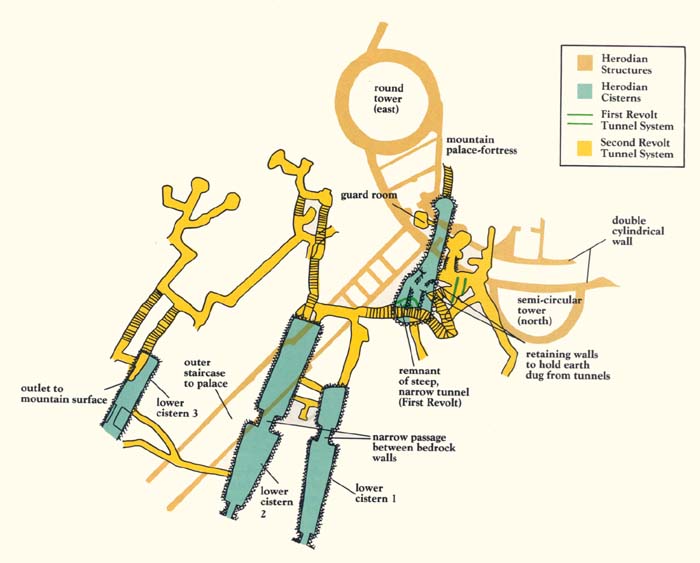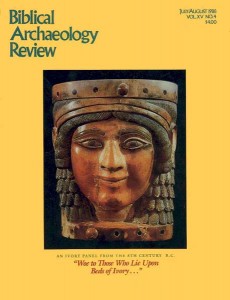Exploring Underground Herodium
Sidebar to: Jewish Rebels Dig Strategic Tunnel System

Let’s take a walk through the labyrinth of tunnels and stairways and cavernous cisterns hidden below the palace-fortress at Herodium. You can do this by following the reconstruction drawing above, the plan below and the pictures following.

The colors on the drawing will also help you. The mountain palace-fortress, the steep outer stairway and the path to the cistern openings were all built by Herod in about 23 B.C.; they are colored brown. Herod also built the underground cisterns at about the same time; they are colored blue.
The steep, narrow tunnel, colored green, is a tunnel dug by the Jewish defenders of Herodium during the First Jewish Revolt against Rome (66–70 A.D.). It gave them access to the water in the lower cisterns from inside the palace. It was functional but certainly inconvenient.
The stairways and tunnels, colored yellow, are the network built by the Jewish rebels, during the Second Jewish Revolt against Rome (132–435 A.D.), as an underground hideaway and defensive system. At that time Herod’s cisterns (which continued to be used for water storage during the First Revolt) were used as passageways as well as to hold earth accumulated when the tunnels were carved.
Already a library member? Log in here.
Institution user? Log in with your IP address.

